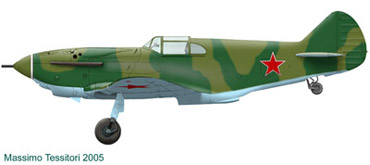File updated on December 20, 2005
 |
In August 1941, three LaGG-3s produced by GAZ-23 in Leningrad were retrofitted
with a Boris Shpitalnyy's 37 mm Sh-37 gun. The planes were named K-37 and
immediately sent to the front. |
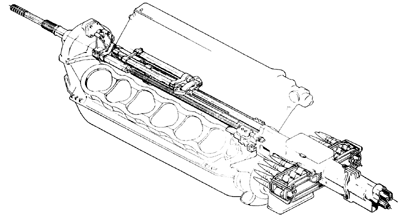 |
This weapon was firing through the cylinder banks and the
propeller's hub; its barrel protruded from the spinner for about 60% of
the spinner length.
The weapon had a loop ammo reserve with 20 rounds.
Here we see a drawing of the Sh-37 mounted between the cylinder nanks
pf a M-105P engine (left side cylinder bank is omitted).
Image from Aviakollekcia 5/2005
|
The gross weight of the plane was increased to 3363 kg, and its speed
decreased of 5-7 km/h ; the climb rate and ceiling were lower than the
standard LaGG-3s of the same series. The handling qualities were preserved
due to the installation of automatic slats, as those installed on later
versions.
The tests demonstrated that the plane was a stable platform of fire,
and the gun had a good kill probability against targets at a range of 300-400
m; the gun was intended both for use against enemy bombers and ground targets.
20 LaGG-3s K-37 were built in late 1941, and they were delivered to
42 IAP on the Bryansk front in early 1942. The first combats were successful,
and three enemy bombers were destroyed. However, it was noted that 20 rounds
for the gun were an insufficient supply. The pilots had to fire only after
having aimed carefully, and only in short burst of 1-2 rounds, both to
save ammo and because the recoil forces caused the plane to drop on its
nose and to lose the alignment with the target, particularly if the fighter
was flying at low speed. Incendiary-explosive shells were used against
flying targets, while armor-piercing shells could be used against ground
armore targets.
In September-October 1942, these planes were utilized during the Battle
of Stalingrad by the 291 IAP with good success, shooting down 13 enemy
bombers; 7 K-37 were lost in combat on that occasion. During their use,
they were escorted by Yak fighters. A.Ootin, commander of the 220 Fighter
Air Division (IAD) to which the 291 IAP was assigned, was very satisfied
with these planes, and wrote that one or two hits in any part of an enemy
plane were sufficient to shot it down.
 |
The new 11P37 (later renamed Nudelman-Soranov NS-37) 37 mm gun was developed
by OKB-16 design bureau guided by A. Nudelman and A. Soranov; they continued
the work of Y. Taubin and M. Baboorin that were shot for their previous
failure. |
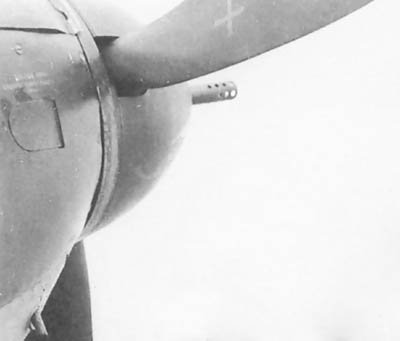 |
The barrel was less protruding than the Sh-37, about 40% of the spinner
length.
The performance of NS-37 was very high, despite its relatively low mass
(150 kg). When armed with armour-piercing shells, it could pierce an armour
of nearly 50 mm at a range of 200 m. The tests of the weapon were
completed in March 1942; this gun was lighter (about a half ) and more
reliable than the Sh-37, and replaced it. |
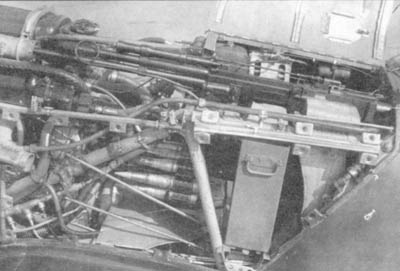 |
This image shows the installation of UBS and NS-37 and relative ammunition.
The UBS and its ammo boxes are clearly visible, while we see only the
rounds of the NS-37 gun, apparently installed on a loop chain reserve
as on Sh-37.
The NS.37 gun is scarcely visible in this image; it is well below the
UBS, coaxial to the prop.
Image from Aviakollekcia 5/200 |
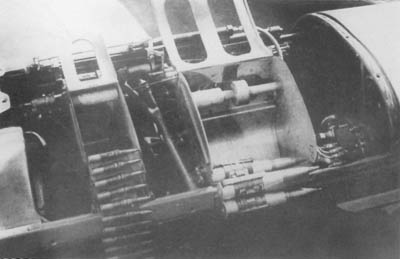 |
This image of the installation of a NS-37 and an UBS on a Yak-9T, that
had the same armament and the same engine, shows a somewhat different
arrangement of the rounds reserve when compared to the LaGG3-37..
|

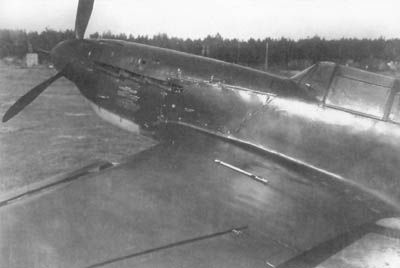
|
The first batch of LaGG-3s with NS-37 were delivered on December 1942,
and were known as LaGG-3-37 (series 34, according to other sources); they
looked as the well-known series 35, but were distinguishable for the long
protruding barrel. It looks that many of them, but not all, had the water
cooler air intake enlarged as on series 35.
Some of them were delivered to the Normandie-Niemen Fighter Air Regiment.
Despite having obtained some success, particularly against bombers,
the uparmed LaGG-3s had some problems due to the reduced performances,
the shifted center of gravity and the strong recoil forces (5500 kg) that
led to damages to the fuselage.
The Il-2 3M armed with two NS-37s in underwing gondolas was more suited
to the antitank role.
The true successor of the LaGG-3-37 in the air-to-air gunship role
was the Yak-9T, that was tested in February 1942 and became operative in
the late spring. It was faster and more stable while firing than the LaGG-3-37,
so no further batches of this type were produced. |
|
Chkalow
04
a plane gifted by the farmers of Gorky region;
21 IAP, Kalininksiy front, May 1943
|
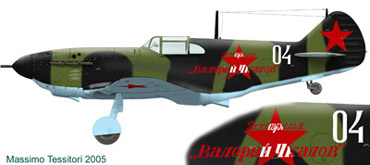
|
|
white 13
a plane seen on a demonstrative movie
|
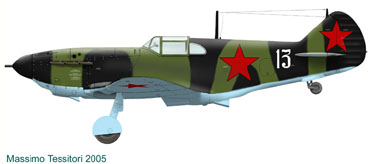 |
|
Chkalow 14
a plane gifted by the farmers of Gorky region;
21 IAP, Kalininksiy front, May 1943 |
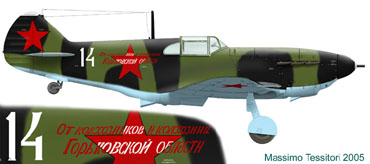 |
|
white 27
A standard LaGG-3-37 with NS-37 gun, probably in spring
1943.
|
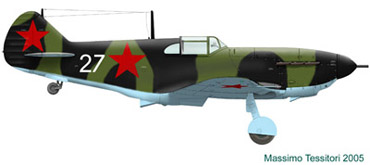
|








